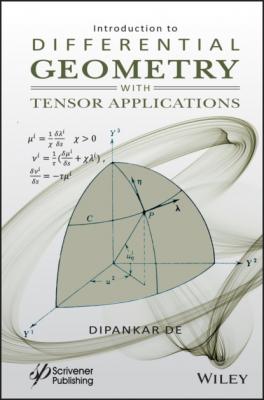Introduction to Differential Geometry with Tensor Applications. Группа авторов
Чтение книги онлайн.
Читать онлайн книгу Introduction to Differential Geometry with Tensor Applications - Группа авторов страница 13
 rel="nofollow" href="#fb3_img_img_c4157d94-325c-526e-b277-8ecd804145f9.jpg" alt="image"/> and
rel="nofollow" href="#fb3_img_img_c4157d94-325c-526e-b277-8ecd804145f9.jpg" alt="image"/> and Proof: We shall prove this result by taking the range of the indices from 1 to 2, but the results hold, in general, when they range from 1 to n.
We get
Taking the determinant of both sides, we get
Property 1.6.2. If
Proof: We have
Therefore,
Taking determinants of both sides, we get
Property 1.6.3. Let the cofactor of the element
If the cofactor of aij is represented by Akj, it is expressed by the equation:
If we divide the cofactor Akj of the element of akj by the value a of the determinant, we form the normalized cofactor, represented by:
The above equation becomes
Property 1.6.4. Let us consider a system of n linear equations:
for n unknown xi, where
Property 1.6.5. Considering the transformation zi = zi(yk) and yi = yi(xk), let N function zi(yk) be of independent N variables of yk so that
Here, N equation zi = zi(yk) is solvable for the z’s in terms terms of yi’s.
Similarly, yi = yi(xk) is a solution of yi in terms of xi’s so that
Now, we have by the chain rule of differentiation that
Taking the determinant, we get
(1.11)
Considering a particular case in which zi = xi, Equation (1.5) becomes
Or
This implies that the Jacobian of Direct Transformation is the reciprocal of the Jacobian of Inverse Transformation.
1.7 Differentiation of a Determinant
Consider the determinant
Then, the derivative of a with respect to x1 is given by
Therefore, in general, we can write
1.8 Examples
Example 1.8.1. Write the terms contained in S = aijxixj taking n = 3.
Solution: Since the index i (or j) occurs both in subscript and superscript, we first sum on i from 1 to 3, then on j from 1 to 3.
Example 1.8.2. Express the sum of